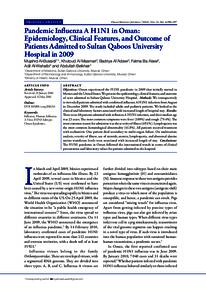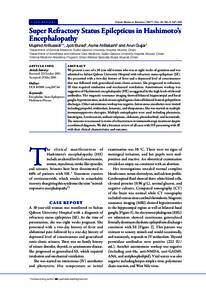Document
Pandemic influenza a H1N1 in Oman : epidemiology, clinical features, and outcome of patients admitted to Sultan Qaboos University Hospital in 2009.
Identifier
DOI: 10.5001/omj.2016.56
Contributors
Al-Maamariyah, Khuloud., Author
Al-Adawiyah, Badriya., Author
Ba Alawi, Fatma., Author
Al-Wahaibi, Adil., Author
Belkhair, Abdullah., Author
Publisher
Oman Medical Specialty Board.
Gregorian
2016-07
Language
English
English abstract
Objectives: Oman experienced the H1N1 pandemic in 2009 that initially started in Mexico and the United States. We present the epidemiology, clinical features, and outcome of cases admitted to Sultan Qaboos University Hospital. Methods: We retrospectively reviewed all patients admitted with confirmed influenza A H1N1 infection from August to December 2009. The study included adults and pediatric patients. We looked at the clinical and laboratory factors associated with increased length of hospital stay. Results: There were 68 patients admitted with influenza A H1N1 infection, and their median age was 23 years. The most common symptoms were fever (100%) and cough (79.4%). The most common reason for admission was the severity of illness (69.1%). Lymphopenia was the most common hematological abnormality (41.8%). All patients received treatment with oseltamivir. One patient died secondary to multi-organ failure. On multivariate analysis, severity of illness, use of steroids, anemia, lymphopenia, and abnormal alanine amino transferase levels were associated with increased length of stay. Conclusions: The H1N1 pandemic in Oman followed the international trends in terms of clinical presentation and laboratory values for patients admitted to the hospital.
Member of
ISSN
1999-768X
Resource URL
Category
Journal articles


